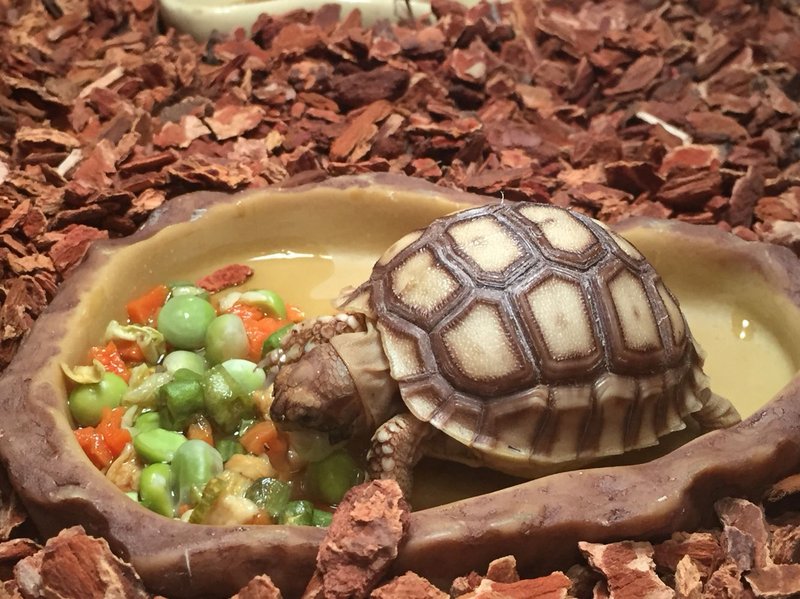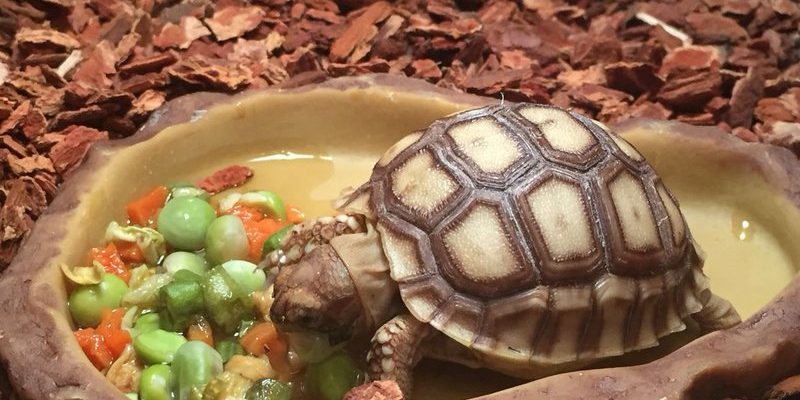
These gentle giants hail from the dry grasslands of Africa, where their natural diet consists mainly of grasses and weeds. In captivity, it’s crucial to mimic their natural feeding habits to keep them happy and healthy. So, what should you feed your tortoise, how often should you do it, and what tips can help you along the way? Let’s break it down together!
Understanding the Sulcata Tortoise Diet
Sulcata tortoises are herbivores, meaning they thrive on a plant-based diet. Their meals primarily consist of high-fiber grasses, which keep their digestive systems working properly. Here’s what you need to know:
- Greens and Grasses: These are the staples of their diet. Think of grasses as the bread and butter of a tortoise’s meal plan. Options include timothy hay, Bermuda grass, and a variety of other grass types.
- Weeds: Wildflowers and weeds like dandelions, clover, and plantain are treats your tortoise will relish. They make for a colorful addition to their dish.
- Vegetables: While grasses and weeds dominate their diet, you can introduce veggies like zucchini, squash, and leafy greens such as collard greens and kale occasionally. Just remember to keep those servings modest!
Here’s the thing: a varied diet keeps your tortoise engaged and satisfied. Just like you wouldn’t want to eat the same meal every day, your Sulcata tortoise craves variety, too. Plus, a colorful plate means a more balanced intake of vitamins and minerals.
Feeding Frequency: How Often Should You Feed Your Sulcata Tortoise?
Feeding frequency is an important consideration in keeping your Sulcata healthy. Generally, an adult Sulcata tortoise can eat every other day, while younger tortoises may need daily meals. Here’s a breakdown:
- Juvenile Tortoises: If your tortoise is under five years old, feed them daily. They need more nutrients to support their rapid growth. A good rule of thumb is to offer as much food as they can eat in 15-20 minutes.
- Adult Tortoises: Once they hit maturity, every other day is ideal. Be sure to keep the portion sizes generous but not overwhelming. It’s all about balance.
You might be wondering about the timing of these meals. Early morning is often best, as it mimics their natural behavior when foraging. Plus, feeding them at the same time each day helps establish a routine, making feeding time a predictable and enjoyable event.
What to Avoid: Foods That Are Bad for Sulcata Tortoises
While there are plenty of foods your Sulcata tortoise will love, there are also some you should steer clear of. Feeding them the wrong foods can lead to health problems, so keep this handy list in mind:
- High-Protein Foods: Avoid giving them items like beans, peas, or animal protein. These foods can lead to kidney issues over time.
- Fruits and Sugary Snacks: Fruits should only be an occasional treat. Think of it like dessert—great in moderation but not as a daily staple.
- Processed Foods: Never give your tortoise anything processed. That means no packaged lettuce blends or commercial tortoise diets. Stick to fresh, whole foods!
Honestly, it’s easy to want to spoil your tortoise with a little extra treat. But remember, less is more! Your tortoise’s health relies on a diet that’s as natural as possible.
Hydration: The Importance of Water in Your Tortoise’s Diet
Water is a crucial part of your Sulcata tortoise’s meal plan, too. While they do get some hydration from the foods they eat, having access to clean water every day is just as important. Here’s how to ensure they’re drinking enough:
- Provide Fresh Water Daily: Make sure their water dish is clean and filled with fresh water every day. Check it frequently; tortoises can be picky about their water quality!
- Soaking Sessions: Regular soaking is also beneficial, especially in warmer weather. A shallow bath for about 20-30 minutes a few times a week helps keep them hydrated.
Let me explain further why hydration matters. Tortoises can easily become dehydrated, which can lead to serious health issues. By ensuring they have plenty of fresh water, you’re not just quenching their thirst but supporting their overall digestive health.
Special Considerations: Supplements and Treats
In addition to their regular diet, some tortoise owners find benefits in providing certain supplements. This isn’t a requirement but can be helpful. Here’s what you might consider:
- Calcium Supplements: A calcium supplement can be beneficial, especially for breeding females. Sprinkle a little on their food a couple of times a week.
- Vitamin D3: If your tortoise doesn’t get enough natural sunlight or UVB light, a vitamin D3 supplement might be necessary to help with calcium absorption.
You might also want to treat your tortoise to some special foods occasionally. Edible flowers, like hibiscus or geraniums, can serve as delightful treats that also provide some nutritional benefits. Just be sure they’re pesticide-free!
Common Mistakes to Avoid When Feeding Your Tortoise
Feeding your Sulcata tortoise might seem straightforward, but there are common pitfalls even experienced owners sometimes encounter. Here are a few mistakes to avoid:
- Feeding Too Much Variety: While a varied diet is important, introducing too many new foods at once can upset your tortoise’s stomach. Gradually introduce new items to avoid complications.
- Ignoring Fiber Needs: Fiber is critical to keeping your tortoise’s digestive system healthy. Skimping on high-fiber grasses can lead to serious problems down the line.
- Overfeeding: It’s easy to overestimate how much food a tortoise needs. Remember, moderation is key. It’s better to keep meals manageable so they can eat a balanced diet.
You might find it useful to keep a feeding journal—write down what you feed them, how much, and any reactions. This can help you spot patterns and adjust as needed.
Final Thoughts on Feeding Your Sulcata Tortoise
Feeding your Sulcata tortoise can be a rewarding experience. By understanding their dietary needs, sticking to a good feeding schedule, and avoiding common mistakes, you’ll ensure your tortoise thrives. It’s about creating the best environment for them to flourish—just like you would for any other beloved pet.
Feeding your Sulcata should feel less like a chore and more like a nurturing activity. Happy tortoise, happy you. Remember to keep things balanced, fresh, and varied, and your tortoise will be a healthy, content companion for years to come!

